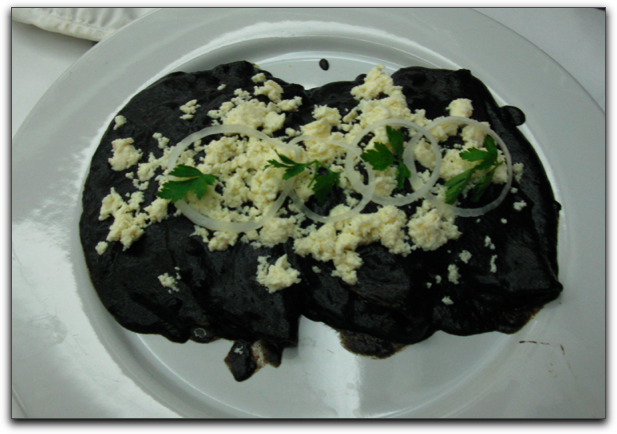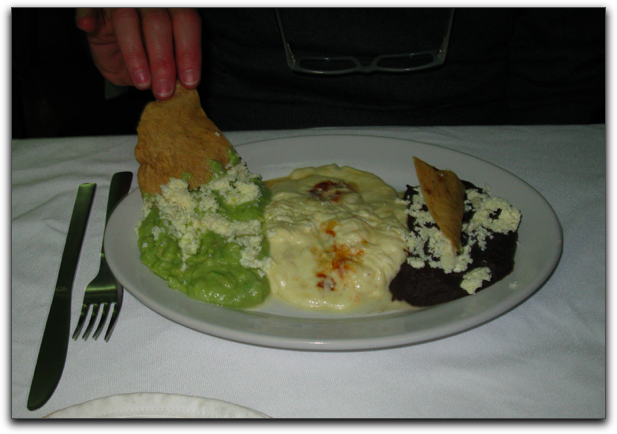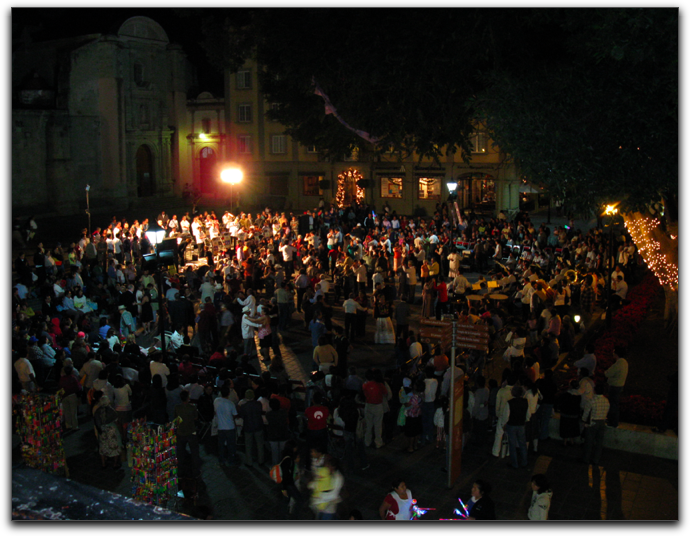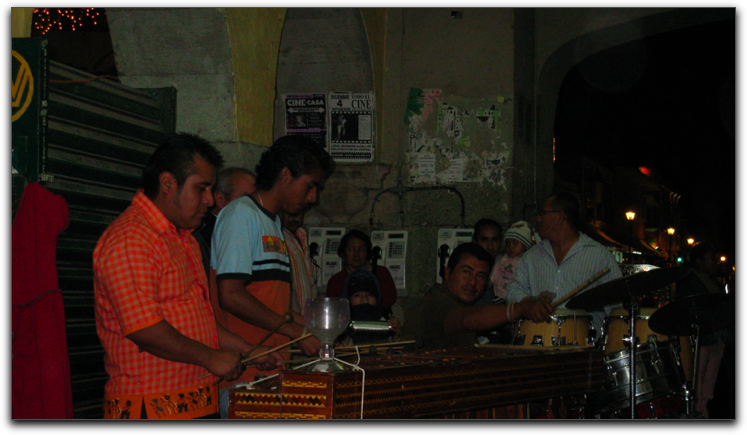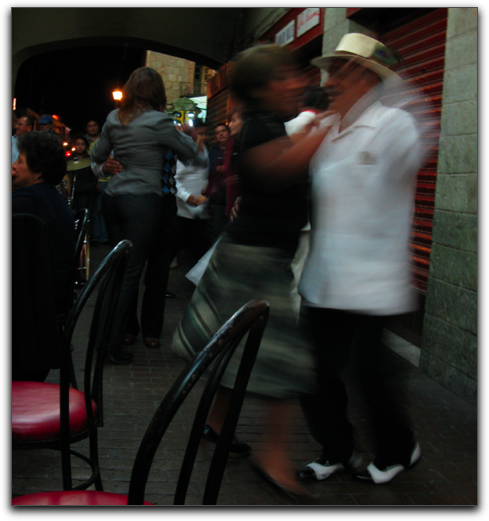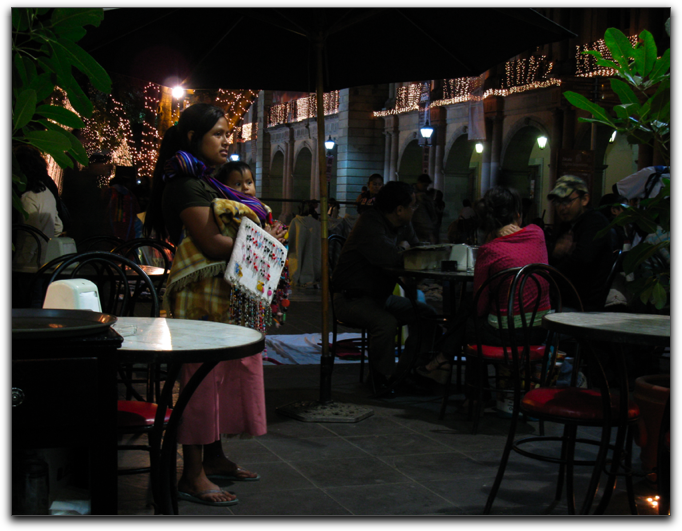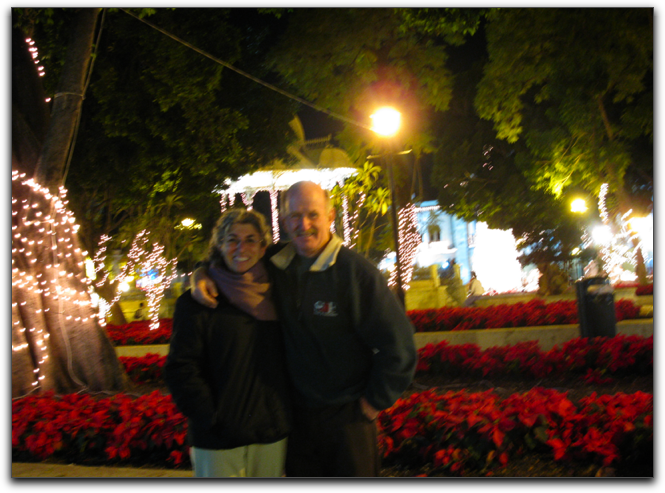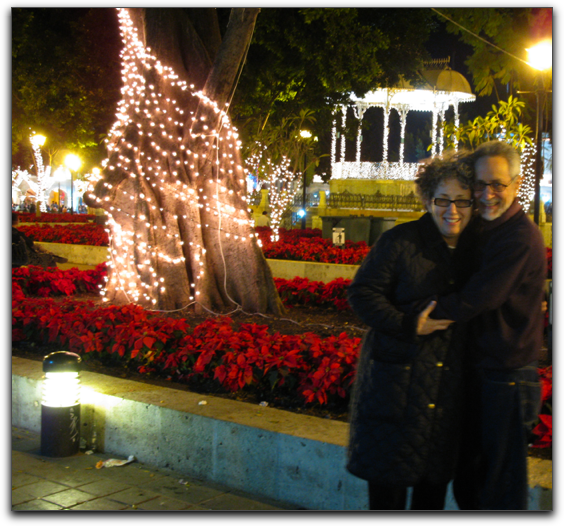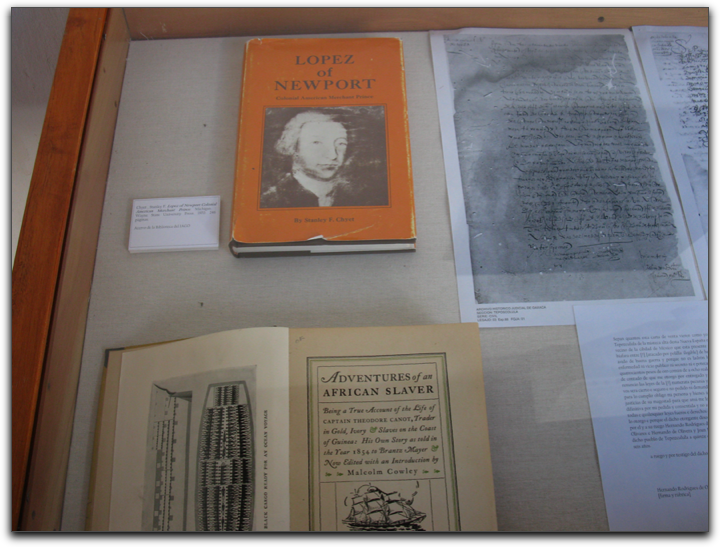
Once again, after a leisurely morning with a lovely breakfast of hot chocolate, fruit, cereal and pastries on the patio, Debbie and I took the bus to town. We traveled by the same bus as the previous day (there are two lines that go down the hill), got off at the same location and walked in toward the Zócalo.
We stopped off for a moment at the IAGO Intituto de Artes Gráphicos de Oaxaca. There, to our surprise we found an exhibit dealing with slavery, and the first book in the first display case was of Stanley Chyet's book Lopez of Newport which Debbie had referred to while doing her research at the American Jewish Archives.

Across the street is the Regional Museum of Oaxaca. We browsed quickly at the gold-laden cathedral Santo Domingo. It is "as advertised" a glorious structure with its gold-leaf painted decor. However, Mark finds these buildings more depressing than "impressing."
Our walk took us further downtown to the city library, where most of the staff was on vacation and the clerk knew nothing about resources.
Another block further and around the corner, at the intersection where Luis had picked us up the previous day, we saw a sign for "Tourist Information." This time we asked for help. The two women there directed us to Casa de la Ciudad; Biblioteca Andres Henestrosa. This institution was open and its people were very helpful. The librarian brought a small pile of materials and Debbie found some interesting references. While the librarian made photocopies, Mark took more "from inside to out" photos.
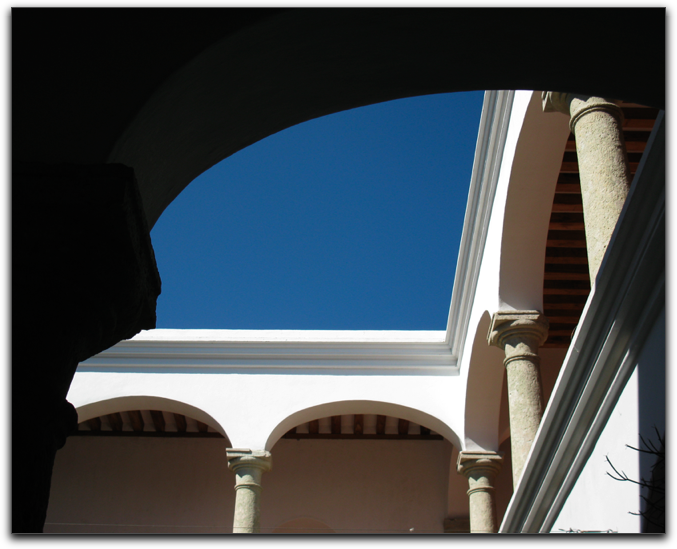
Finished with our printed resources for the time being, we returned and walked through the Zócalo where we noticed an odd tattoo.
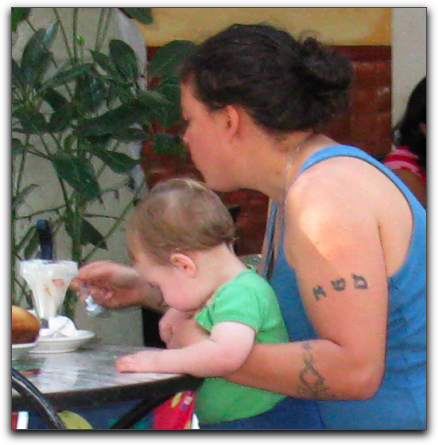
Then, into the markets to find "the sweet things."
Two full city block sized open structures comprise the official markets of Oaxaca. The first is named for Benito Juarez (a Zapotec Amerindian who served five terms as president of Mexico and is known as "the father of his country") and the second, named 20 de Noviembre, the date of the 1910 Mexican revolution (the first of a number of liberalizing revolutions in Mexico in the 20th century).
The Benito Juarez market sells mostly produce and small items of all kinds. The aisles are narrow and dark (all photos are with flash),
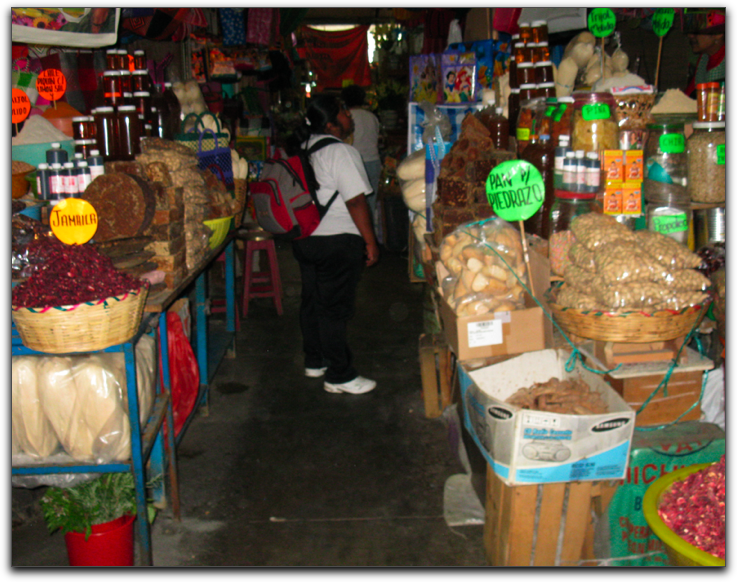
we saw a lot.
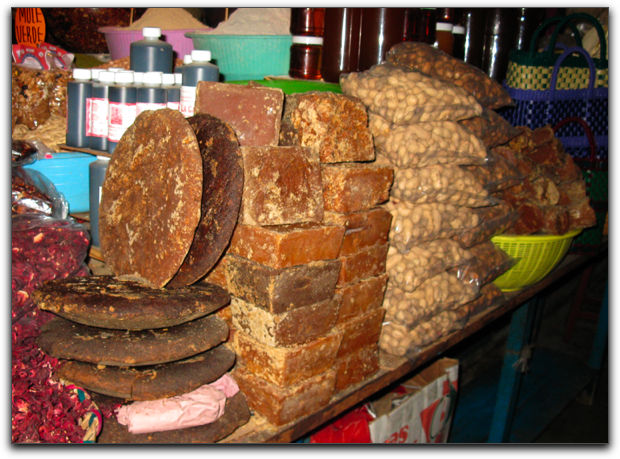
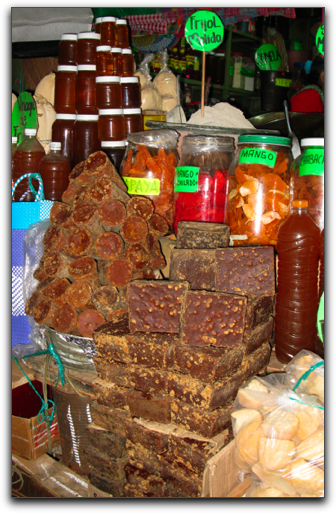
Not that we bought any.
We also found a number of curiosities — fruit, vegetables and animal parts we could not identify. We usually walk throughout the day with Mark's backpack (carrying his computer). However here in Oaxaca, because we return "home" to Miriam and Luis, we have traveled lighter. Nonetheless, we saw a wide variety of bags which are popular among the locals as well as the tourists. There's a broad range of (conflicting) attitudes expressed
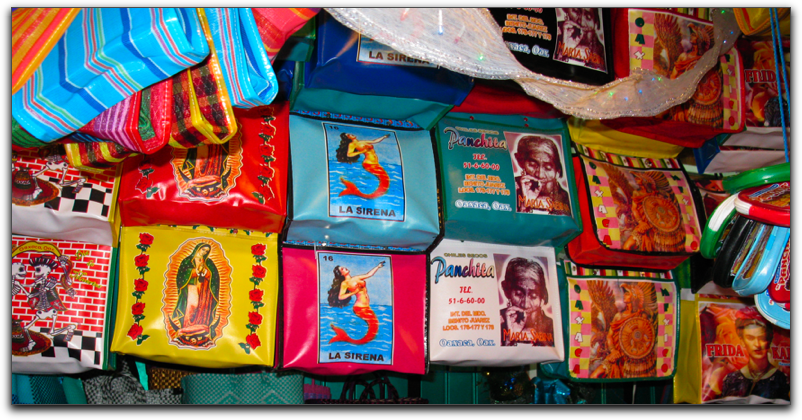
but we were mostly interested in the Frida bags.
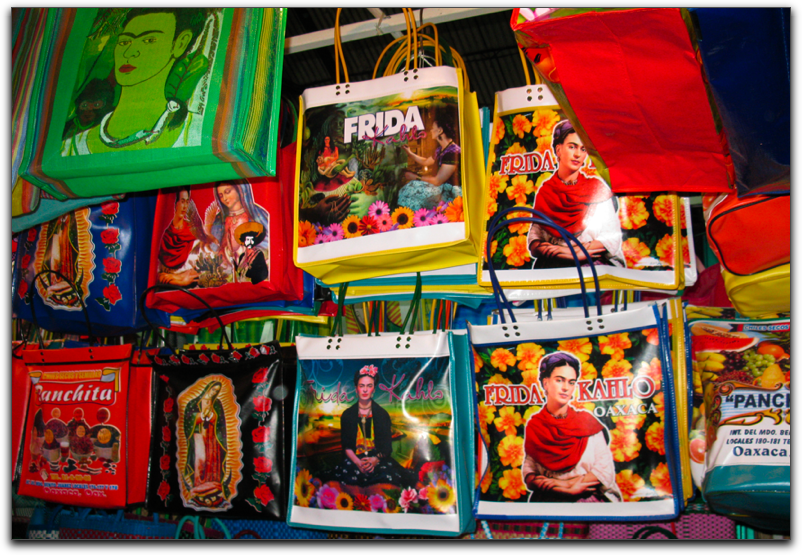
The 20 de Noviembre market is more open and somewhat like a food court in a mall with many prepared foods and mini-restaurants. Among them were a couple of chocolate shops. The ever-present Mayordomo:
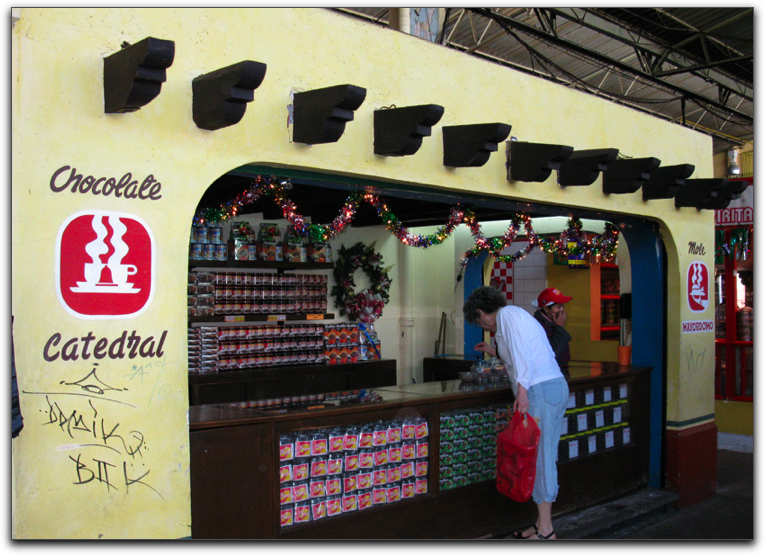
a small "Mole Oaxaca"

and a tiny "Conchita"
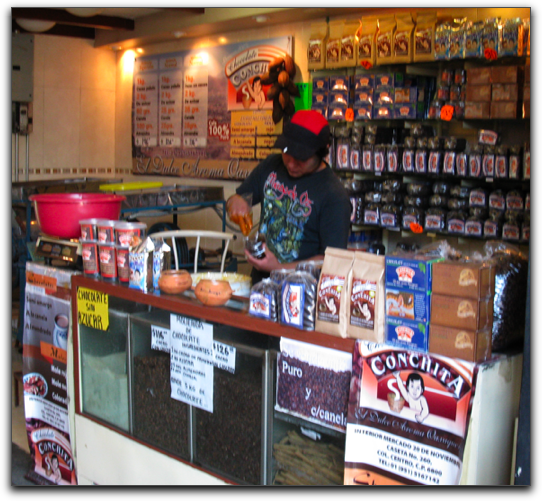
where the sole attendant was busy stuffing fresh mole into plastic baggies.
Mina street borders the south edge of the 20 de Noviembre market. Almost the entire street is populated by competing chocolate mills (the spots in the red circles are identical).
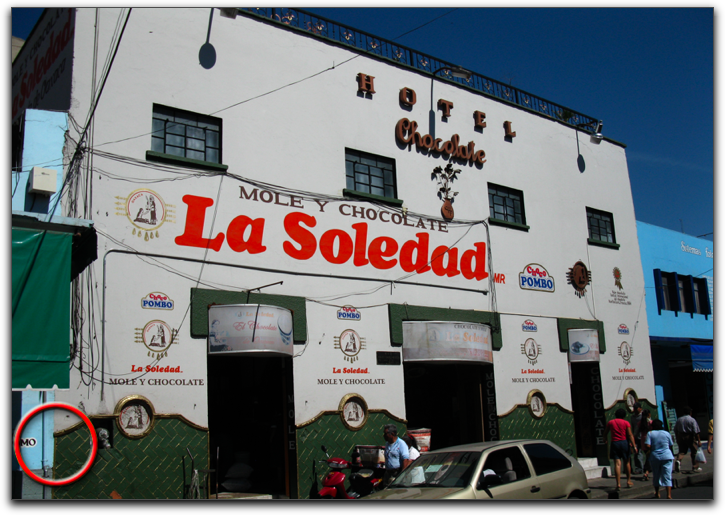
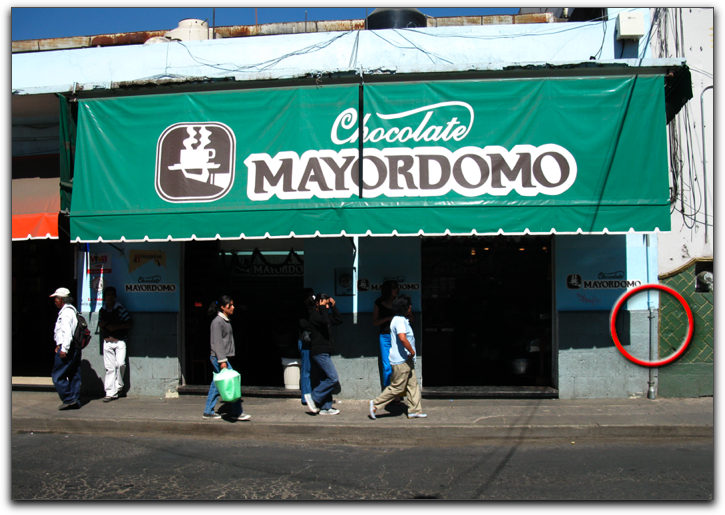
Around the corner on Calle 20 de Noviembre is yet another mill "Guelaguetza"
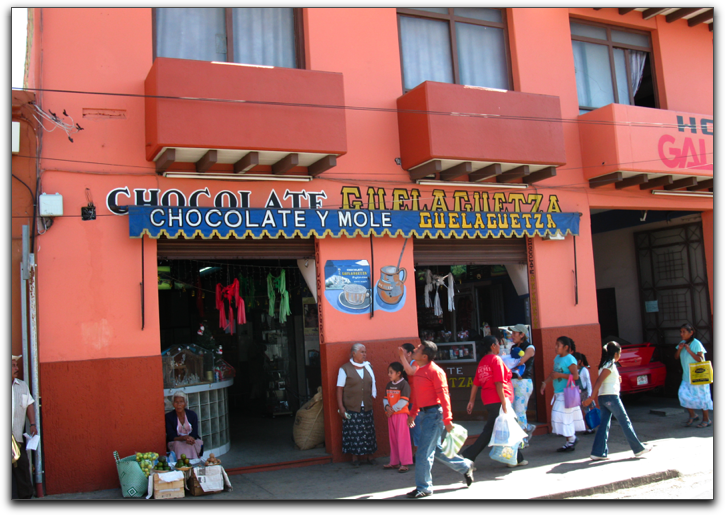
We explored and asked about the factory offices of Mayordomo. We learned it was about six blocks away, so we walked over. The boss was away. We will try to arrange an appointment before we leave.
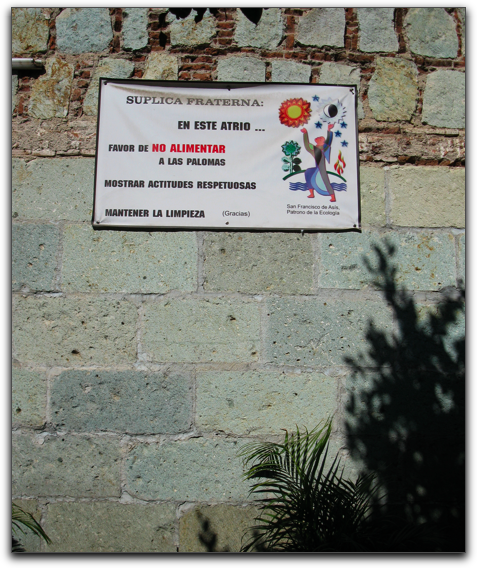
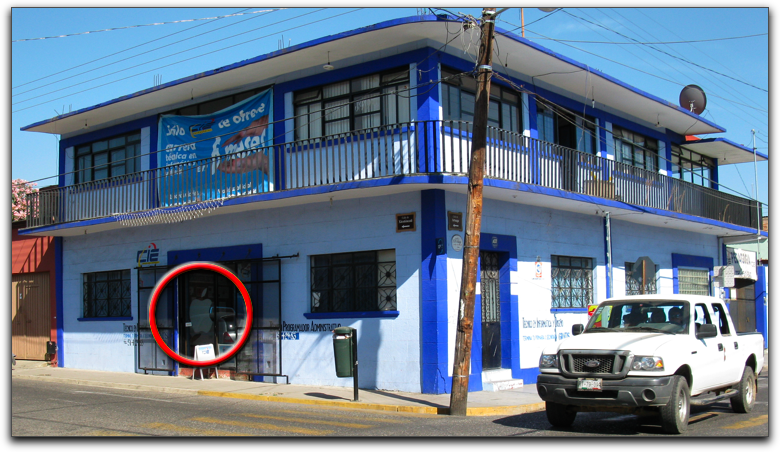
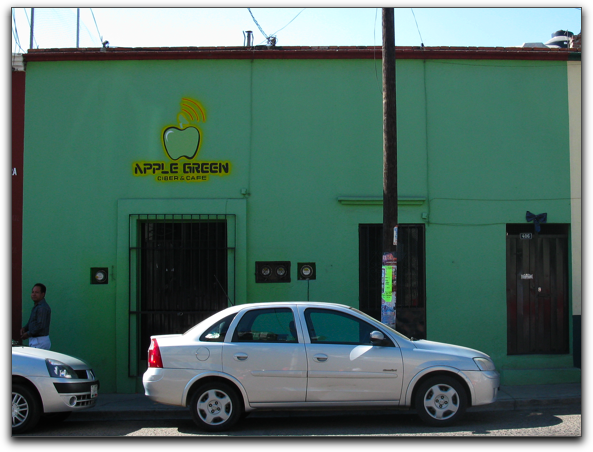
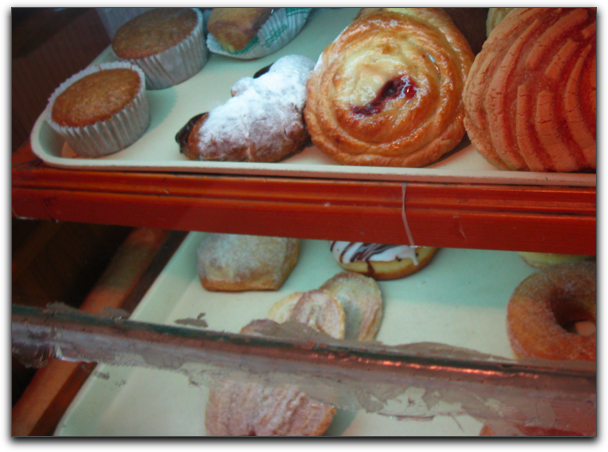
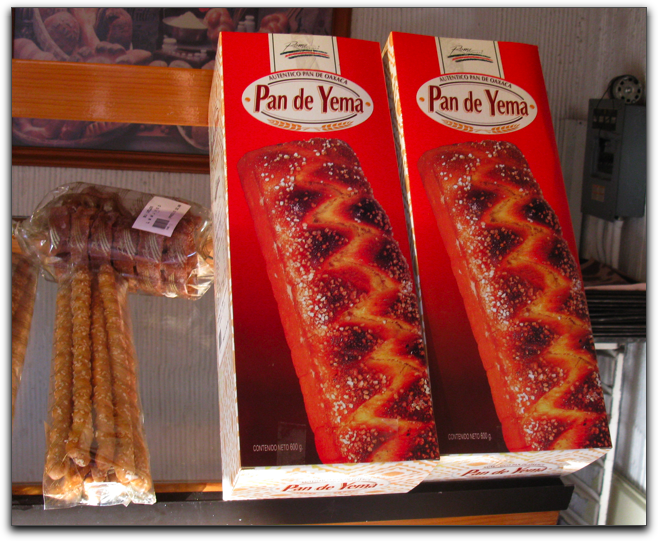
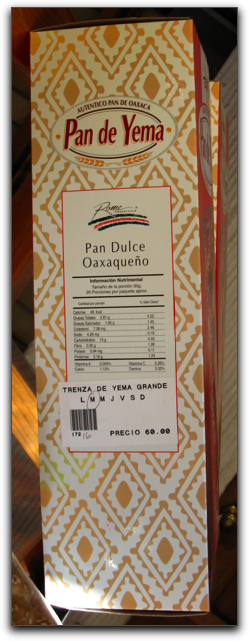
We returned once again to the market to buy avocados and squash flowers for Miriam and Luis' kitchen and caught a cab back home.
The cab drove a new route that seemed to skirt most of the traffic. We're beginning to recognize some of the major streets we traverse every day.
